Patient Story 8 October 2025
The Flip of a Switch
Written by Gigi Carter
Robin Lyons’ life changed overnight with a cancer and sepsis diagnosis. With support from Ivinson’s care teams, he endured treatment, regained mobility and discovered a new perspective on life and community.

This last year, Robin Lyons has become a personal expert on near-death experiences. What would become a wild saga of bad luck, Robin, a 42-year old graphic designer, visited Ivinson’s Convenient Care with what he thought were flu symptoms. In the weeks that followed, he would find himself saddled with a stage four cancer diagnosis and complete paralysis in his legs that would leave him immediately wheelchair bound. Ivinson’s Cancer Center and Rehab teams not only saved his life, but helped him learn to walk again.
Most Ivinson departments know Robin on a first-name basis, partially because of his eccentric personality and infectious optimism. In the last year, Robin has frequented nearly every area at Ivinson Memorial Hospital for his care. On Memorial Day in 2024, he started sleeping a lot and feeling a little more sluggish than usual.
“I did the middle-aged male thing and just sloughed it off as, ‘Hey, I’m not feeling well but I can handle it.’ My wife said, ‘Get yourself to the convenient care clinic,’ since it was the only place open on the holiday.”
Robin’s wife, Gabby, works in Ivinson’s accounting department and noticed her husband had been lethargic for a while. During his visit, the clinic ran many blood tests. 15 minutes later, the provider returned with a panicked look on his face.
Robin had sepsis and needed to be admitted to the hospital immediately, shocking them both.
Sepsis is a serious condition in which the body responds improperly to an infection. When the damage is severe, it can even lead to death. It’s a time-sensitive emergency that requires an immediate response. “Two days, the doctors didn’t know what was wrong with me. They drew more blood than I knew what. They thought it was some rare blood disease, because I had almost no blood in my body, at all. The doctor was like, ‘I don’t know how you walked in here on your own power.”
Ivinson’s inpatient nurses kept giving him blood, which made him feel a little better, but they had to get a biopsy to learn more. Robin waited about two weeks to get the surgical biopsy. They took eight different samples from a painfully swollen golf-ball-sized lymph node.
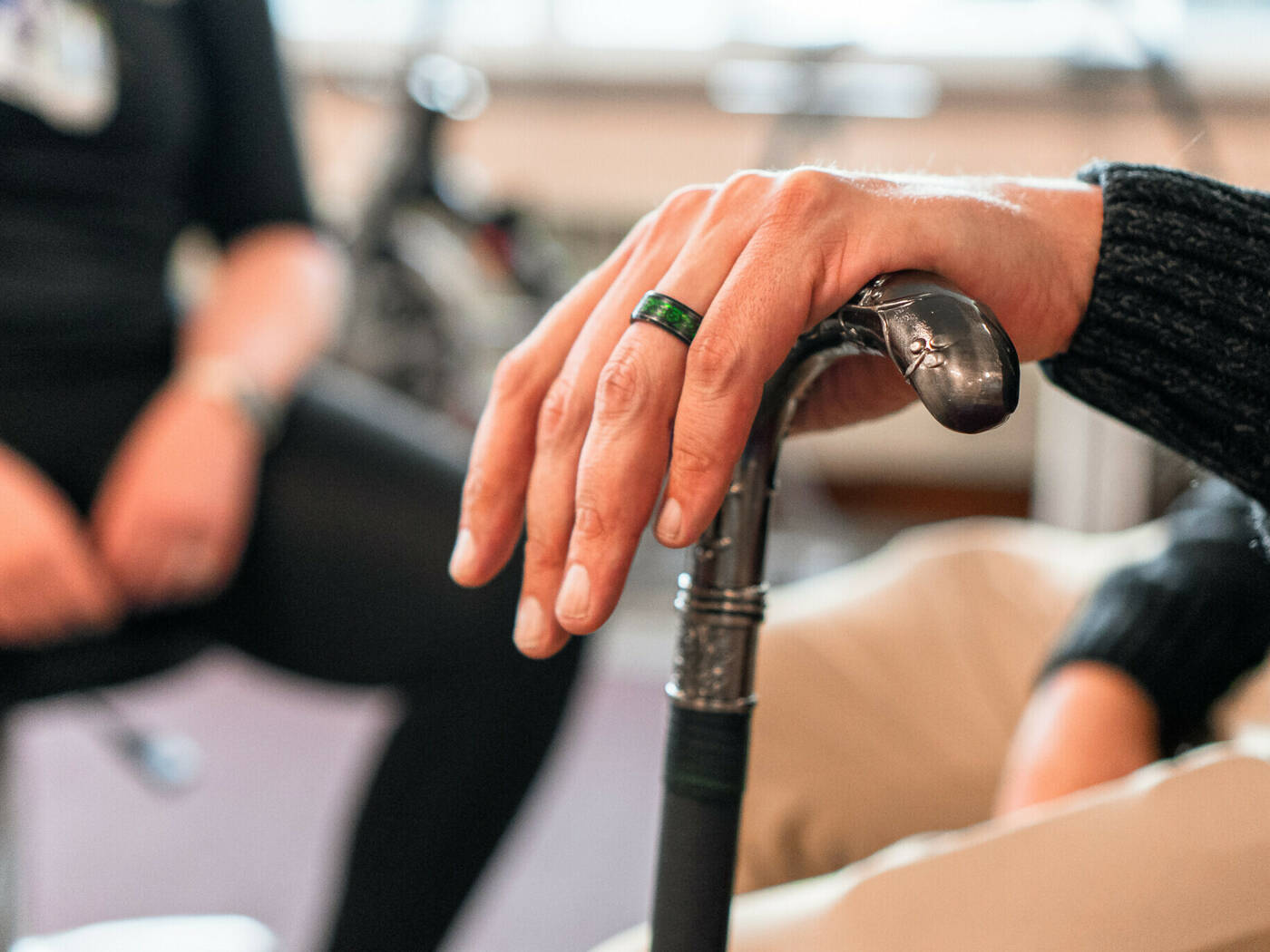
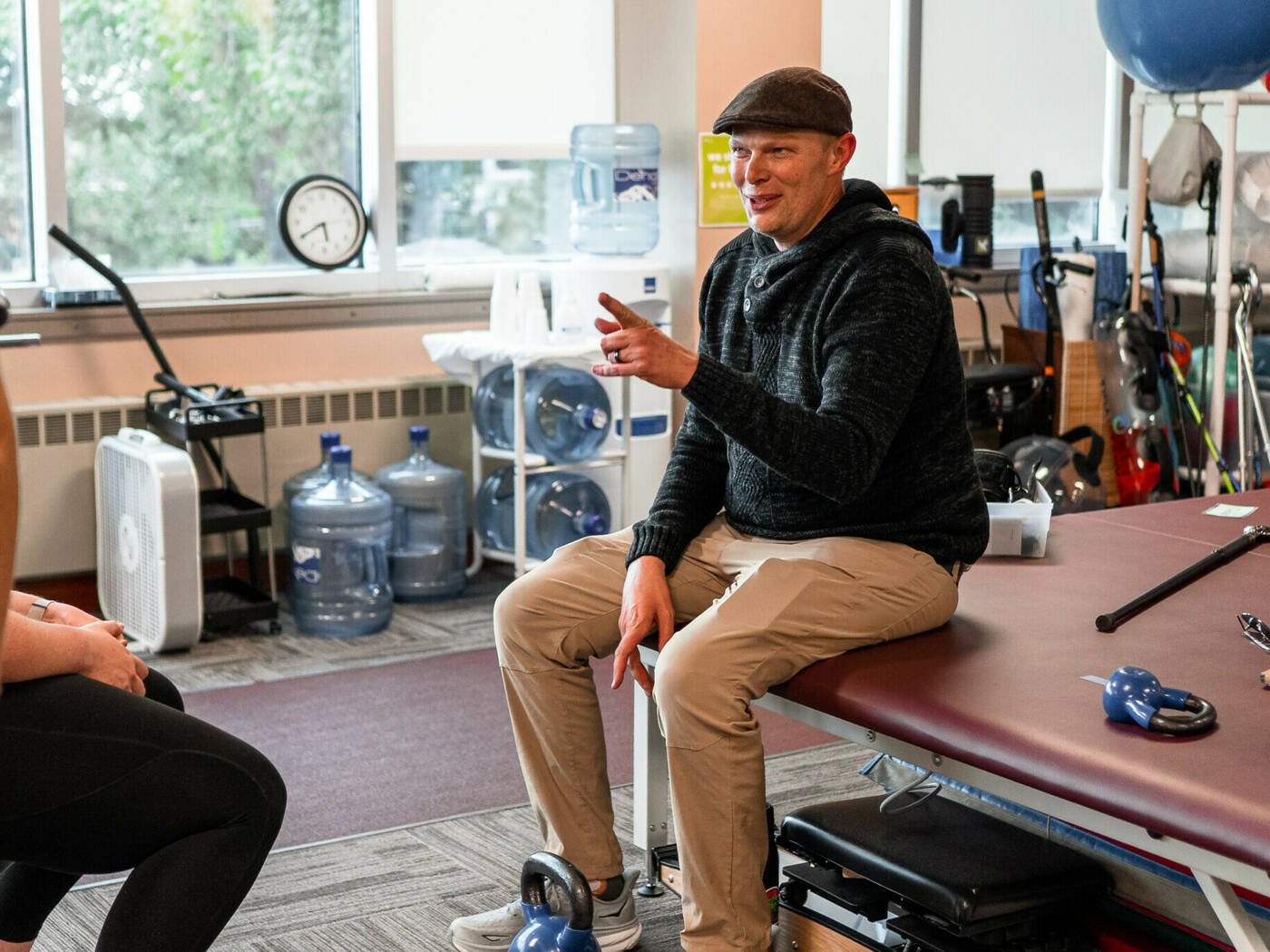
The diagnosis came like a tidal wave: stage four Classic Hodgkin’s Lymphoma – a type of cancer that affects the lymphatic system, the body’s germ-fighting and disease-fighting immune system. The disease happens when healthy cells in lymph nodes change and grow out of control. When caught early, Hodgkin’s lymphoma is one of the more treatable cancers, with about an 80 – 90% success rate if the body responds well to a mix of chemotherapy and radiation.
By mid-June, Robin and Gabby were making regular visits to the Meredith and Jeannie Ray Cancer Center. The providers at Ivinson worked with UCHealth facilities in Colorado, at Anschutz’s lymphoma wing, to help Robin’s body stabilize and develop a treatment plan. He began chemotherapy immediately. He also received regular blood transfusions, since the cancer was essentially hemolyzing all of his red blood cells at the same time.
“I was losing blood quickly. All the samples they took had no blood in them or anything, down to the bone level,” says Robin. “The cancer had shut my bones down. They were hoping giving me more blood would ‘restart’ my bones. There’s no guarantee. Everyone was trying their best to figure it out with each treatment of chemo.”
He started to feel better with more blood being added to his limited supply. The numbers started to improve, though the roller coaster of cancer treatment was wearing him thin. Then, all of a sudden, he lost all feeling in his feet and legs.
“It was like the flip of a switch. I stood up to go to the bathroom, and I fell. It was full paralysis from the mid-calf down. Complete numbness, like when your legs fall asleep but right before the pins-and-needles feeling.”
He was immediately reliant on a wheelchair. Robin, who ordinarily stands at a confident 6’4”, suddenly needed the help of multiple nurses and his wife to get in and out of the chair. While it was physically exhausting to have to endure, emotionally, he couldn’t imagine how much things had changed in such a short amount of time.
“I just had no strength; the neuropathy took everything,” said Robin. “Where you go from being the person that was taking care of everybody in the family, to needing help with basic things, it crushed me. I couldn’t open a can of Coke without help. There were times where just the loss of control was just too much to handle.”
Robin has a 17-year-old daughter, a 13-year-old son and an involved extended family to take care of. Privacy was important to their family at this stage, keeping as much control as possible through a medical situation that felt entirely fragile. His father-in-law built a permanent wheelchair ramp on the front of their house. The Cancer Center social worker was pivotal in securing resources to help them pay their bills as they navigated this new reality. The social worker even helped him fill out the paperwork, since Robin had lost the ability to write and draw. A difficult loss for someone who works in the media industry with a creative background.
Reflecting on what was most helpful during that time, Robin recalls immense family support and good humor. “My son comes in one day that I’m sitting in my chair, making some toast,” Robin recounted. “He comes up to me, and he goes, ‘Hey Dad, remember when you used to be able to walk?’ And I hear my wife in the living room trying not to laugh. Things like that, raw moments of just realizing life can change in an instant. You are one way, and a few weeks later, your reminiscing on being able to walk across the hallway. Suddenly it’s precious.”
Despite his mobility struggles, slowly his body started to respond to the chemo. He started to feel a little better, and the drugs were tackling the cancer aggressively. With this type of treatment, consistency is key. But as soon as Robin and his family started to feel like there was a light at the end of the tunnel, painful itchy rashes started to appear on Robin’s skin. Rashes are a common symptom of Hodgkin’s lymphoma, so the Cancer Center referred Robin to a dermatologist to help put his mind at ease.
His dermatology tests came back, and on top of everything, Robin now had a Shingles diagnosis.
“It was miserable. They caught it within 72 hours of it coming in, but the cancer almost didn’t matter at that point, I was suffering.” Shingles can often creep up on immunocompromised patients but it needs to be treated aggressively. The Cancer Center team had to completely pause the chemotherapy to treat it, pushing all of that tumor-shrinking progress backwards. By the end of the summer, Robin had lost over 60 pounds and all of his hair. He had also returned to work, this time in a wheelchair, managing sales for UW’s student media office. His willpower was wearing thin, and, mentally, that place is hard to go back to.
“There are some things I missed, going through treatment. I missed some of my son’s hockey games and I swore I would never miss a single game. Being a parent, you feel so guilty for ever missing a milestone.”
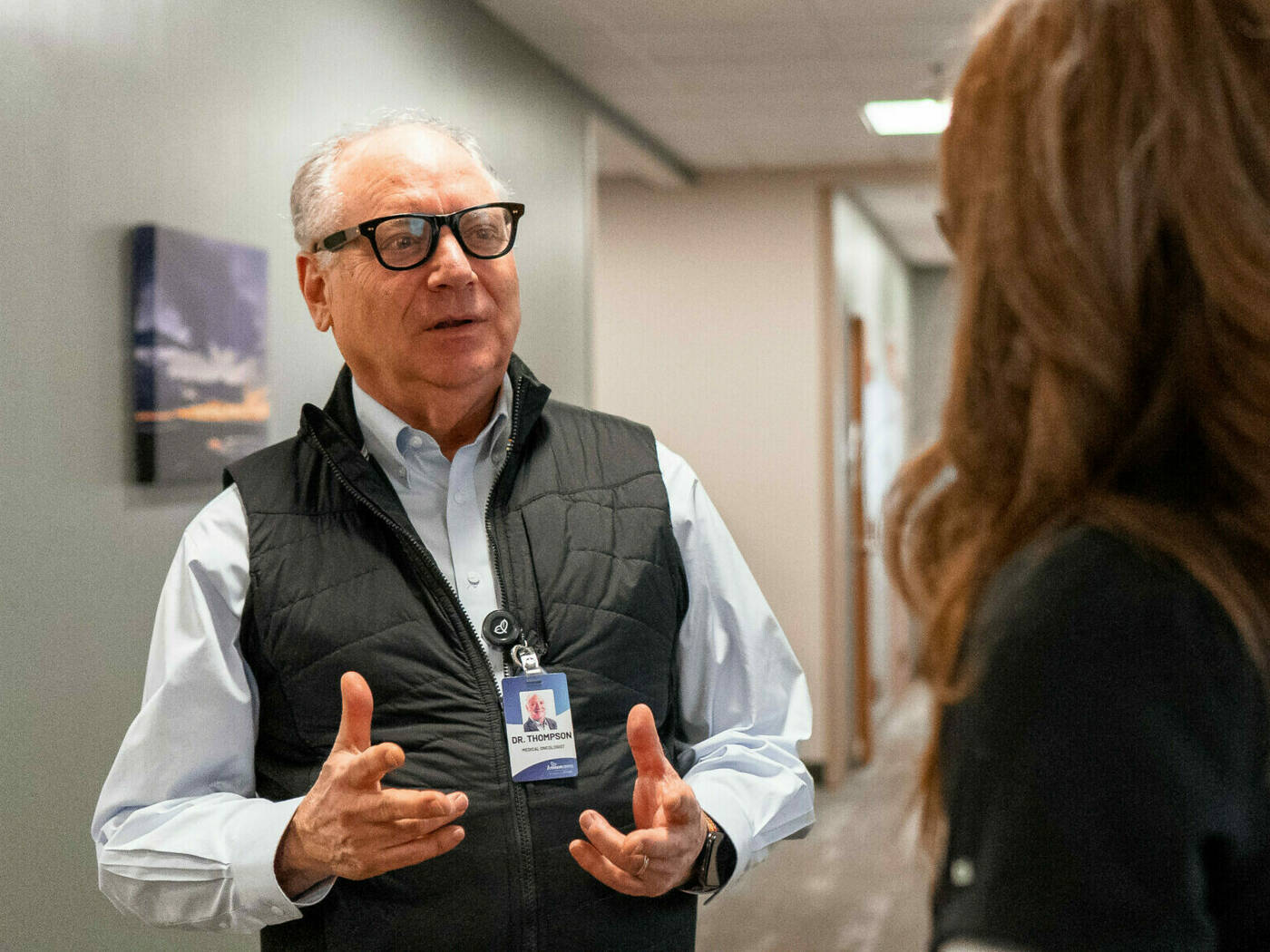
After Robin recovered from the Shingles diagnosis, Ivinson oncologists Keith Thompson, MD, and John Kennedy, MD, took over his care and changed up the regimen to help slow the neuropathy and finish treating the cancer. By this point, Robin is on edge, he’s struggling, and his body has been racked with chemo. He’s seen so many specialists at this point. But with Dr. Thompson, there was an immediate shift in the connection.
“He came in, he’s very quiet and chill, but he had the biggest smile. His heart was in it, I could feel it. But the first thing he said to me was, ‘What can I do? What do you need?’ And I teared up. Because there are all kinds of amazing doctors, but they don’t always say ‘What can I do for you?’ They’re just trying to cure the disease. But he really reached out with his whole heart. I trusted that he was going to get me through to the end. He put my mind at ease.”
With his first diagnostic PET scan, Robin’s cancer was all over his body — detectable everywhere. After three months of intense treatment, they took another PET scan, at the halfway point. With the care and the treatment plan the Cancer Center developed for him, his cancer was 85% gone within a few months.
“Dr. Thompson was so excited. I’m sure as an oncologist, you don’t get to see good news that often. He showed me the two scans next to each other, and I couldn’t believe it. The new one was completely dark with no cancer, and the other one was a Christmas tree. It was crazy. And I just found this fire within me to keep going. The medication is working, I’m going to survive this.”
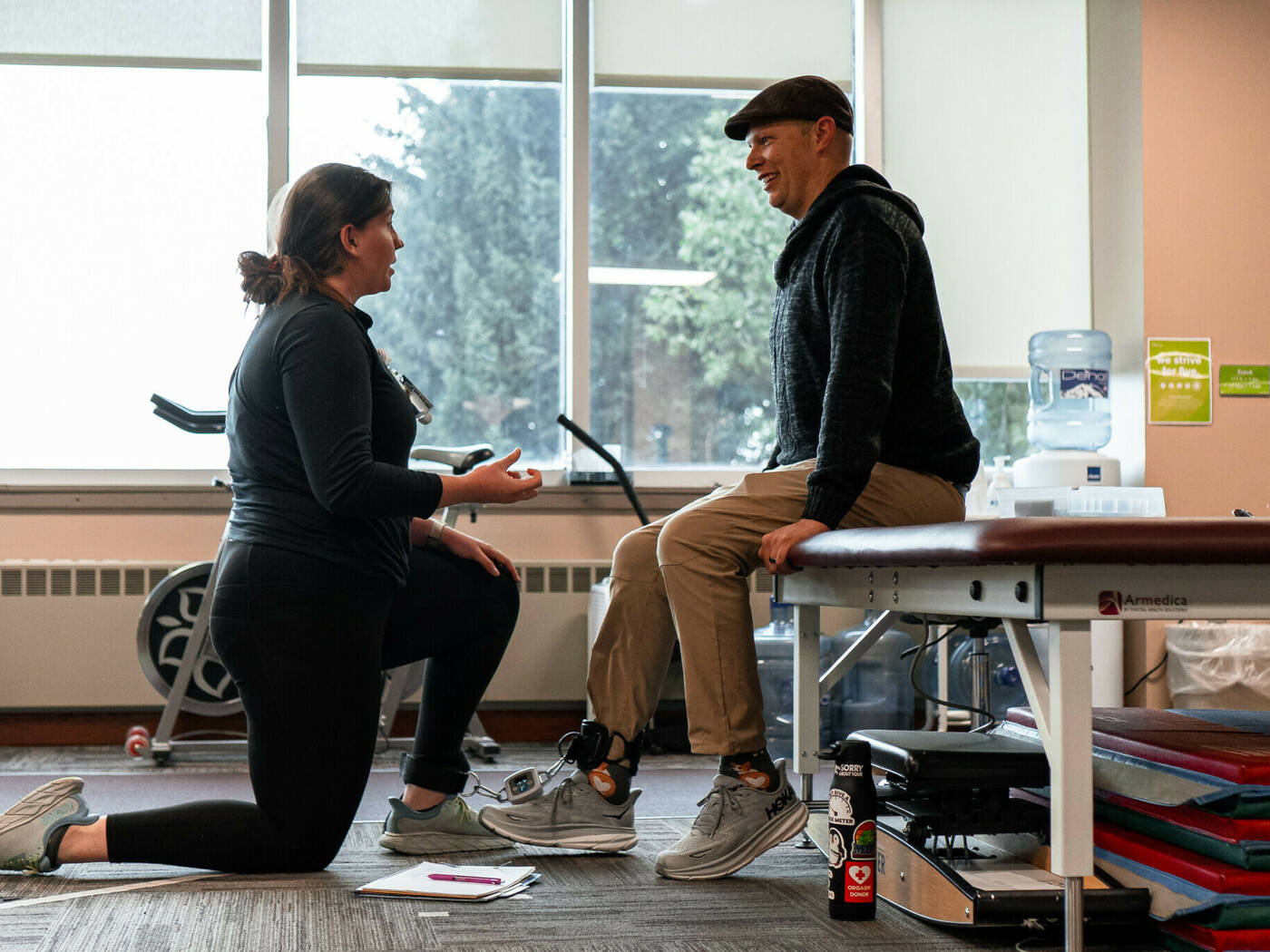
After receiving the last treatments to tackle the cancer, Robin was officially in remission.
He was ready to start working on his strength. Often, the work to rebuild muscle through rehabilitation is the hardest part after battling the cancer medically. Robin chose to continue his physical therapy at Ivinson, which is conveniently located above the Cancer Center. Keeping everything in-house was important to their family, as Robin was born and raised in Laramie and feels a strong connection to this hospital and the overall community.
“I start going to physical therapy, meet Sierra, and I ask her point-blank if I’m ever going to walk again. I’m terrified. The cancer part is ending, but this new wheelchair reality is a hard pill to swallow. Sierra reassured me right away. She said, ‘I don’t know how long it’s going to take, but we’re going to get you there.’”
The rehab team set him up with special ankle-foot orthotics, which enabled him to stabilize his legs. The loss of mobility was starting to feel like a higher hill to climb. But with the cancer out of his blood, his upper body strength started to improve.
“I’m sitting there, and Sierra said, ‘I need you to try and lift your heel off the ground.’ And I’m straining, sweat’s pouring, beading on my brow because I’m trying to move. And she can barely feel the muscles. But they’re there. I can feel them. The muscle memory doesn’t go away. They’re there!”
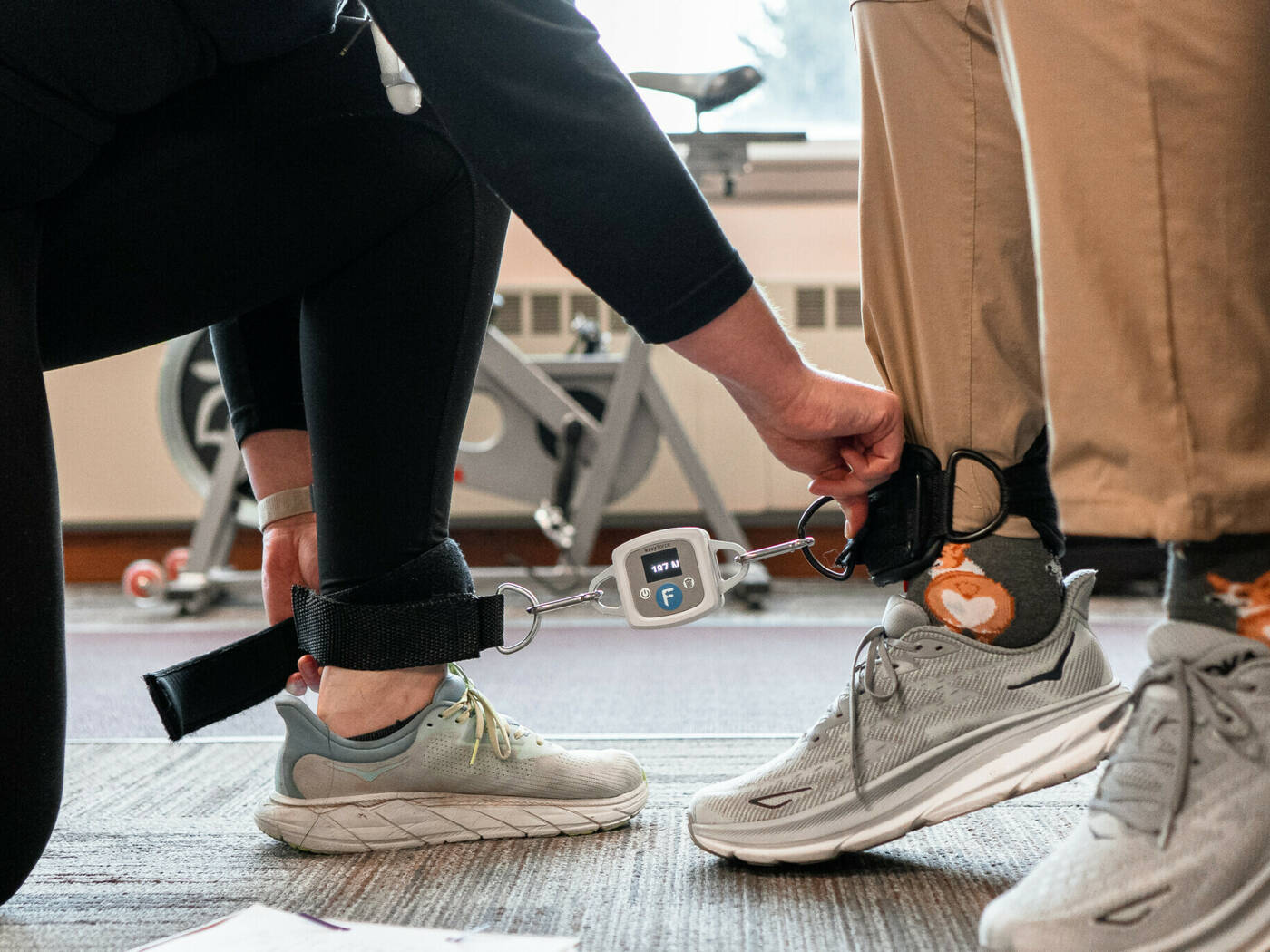
That moment reignited Robin to continue progress. He was in the PT office every Monday, Wednesday, Friday, in addition to the pool and at home exercises. Sierra, Stacy, and Jessie in the Outpatient Rehab department tried lots of different methods to find improvement for him. Everything they were doing in physical therapy helped, little by little.
“It was amazing. Huge. Very emotional for me. I was having to basically relearn, reteach the muscles again. When nerves wake up, it takes time. It felt like knives being dragged across my feet, literal firecrackers shooting off at the end of my toes. But my feet were starting to reactivate.”
By January, he was able to walk three laps around the track with help.
“I didn’t realize that all these little things, how much improvement was happening. All of a sudden it dawned on me, I’m walking. A month ago, I couldn’t even stand up!”
Even with his progress, it’s been a difficult transition. One of the biggest unseen side effects is the toll on his mental health and his change in viewpoint as a disabled person. “Everyone checked on me, my primary care doctor, Dr. [Ketura] Talbot, and so many coworkers and friends,” said Robin. “Having to show up to work at UW in a wheelchair, it was the most amazing perspective change I’ve ever had in my life. You see people in wheelchairs, people that are paraplegic, that were just in a cane or a walker, and your brain can’t comprehend what’s going on. It changes your perspective when you’re in that position.”
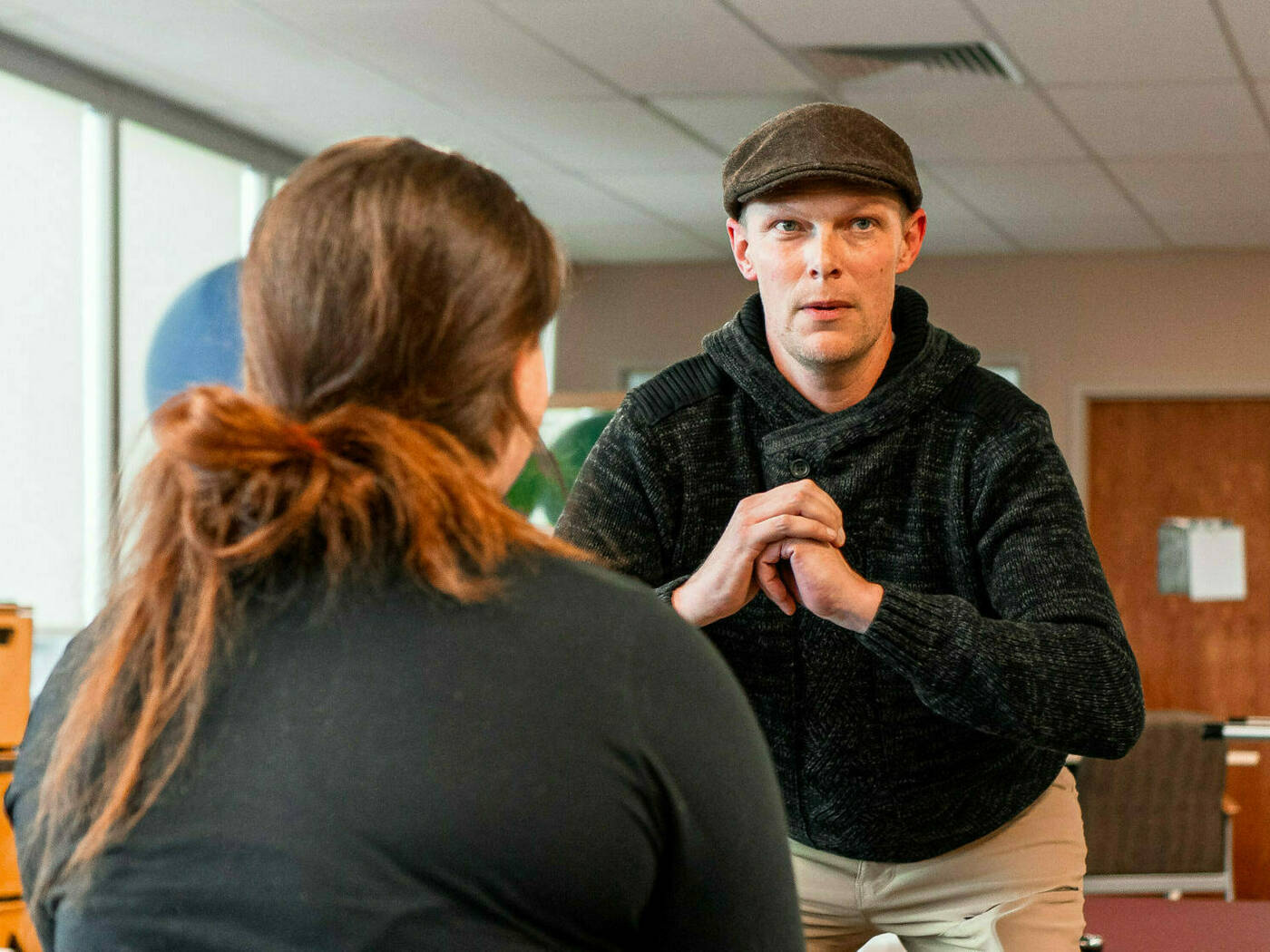
Robin works for the University of Wyoming as the sales and circulation coordinator for student media. He oversees graphic designers and journalism students and makes sure all the publications get where they need to go, all across the state. From a university and a student perspective, it gave Robin a better insight on accessibility needs that affect the entire community. His new goal is spearheading ADA accessibility on campus and connecting with students and others that are struggling with limited mobility and illness for one reason or another. When Robin needed extra time off to recover, his community stepped up.
“Managing a staff of students is great because they’re full of curiosity. They brought me back. They kept me going. People from all over the university just donated PTO in huge amounts. I got 100 hours from one professor. I got 75 from another. A custodian donated 50 hours. At those points, everything else gets stripped away, and it’s the bare essentials. What do you need? We got you. And the support system that is in this community is amazing. I’m so grateful.”
Robin is able to walk a full mile now and uses a cane when he’s out and about, but he’s motivated to keep going. Each step toward progress is another shred of control back. It’s important to him to set an example of what can happen with the right intention, and the importance of advocating for yourself and leaning on others when it feels like you shouldn’t.
“My big goal was I wanted to be driving by the end of the summer. Last Friday, I did the full delivery route for the newspapers, which I hadn’t done in over a year. All the little wins. Soon I’ll be able to run and jump. And we’re going to savor that day.”
Robin and Gabby still worry about everyday struggles, finances, family, relationships, work. But now they’re able to be grounded in the things that matter most. Reflecting on that time and how this changed their family and his work, he said they’re still unpacking the story and recovering emotionally. He’s always been an optimistic person, but this experience has given that outlook more complexity.
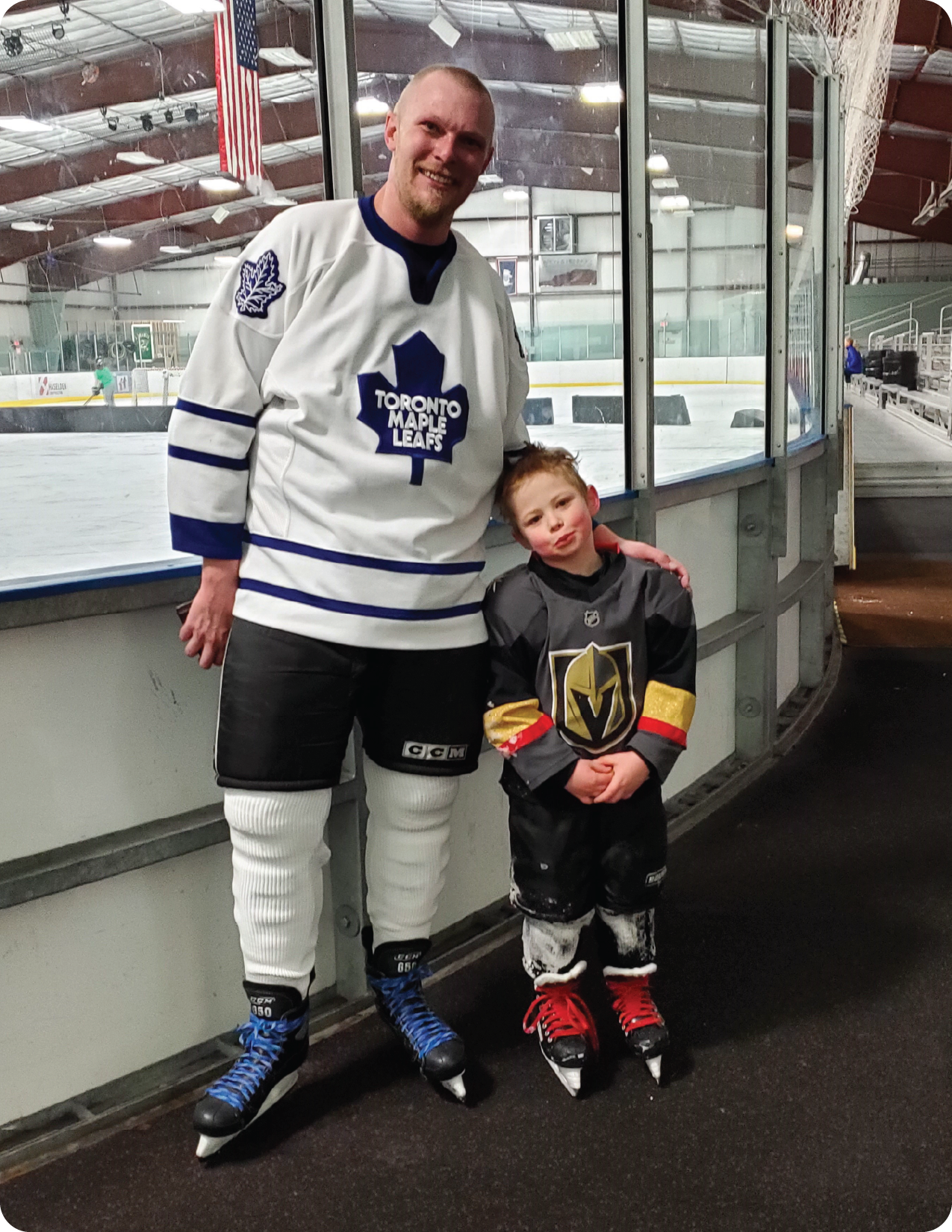
Robin says he’s looking forward to getting back to the things he loves, and spending more time with his family, outside the doctor’s office. Getting to savor those everyday moments of independence is something he doesn’t take for granted. When asked about the first time he felt like he was getting his life back, one particular memory sticks out in his mind.
“I got to see his first ever goal. It was my first trip I ever took since being sick. We went to Douglas. That was a long drive for me. But we got there and I was able to see my son’s gorgeous first goal in hockey. I actually stood up out of my chair. I was screaming and everybody was looking at me like I was crazy. But the hockey parents understood. I’ll never forget it.”
Gigi Carter is a Marketing Specialist and Laramie native. She joined the Ivinson team in 2021 after working in a variety of nonprofit and tourism organizations planning events, engaging in community outreach and graphic design. Gigi is passionate about women's education and improving the health and diversity of her hometown.